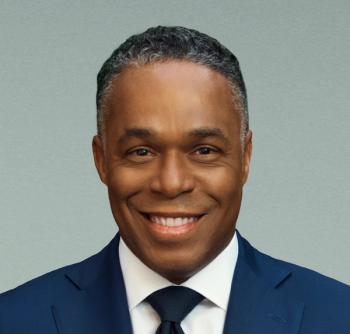
Hospital mergers and acquisitions may be picking up
The number of transactions this year is on the lower side, but they are bigger deals. And three health system deals were announced within a week.
After a very quiet period for hospital mergers and acquisitions, the pace of deal-making could be picking up.
Within just about a week in October, three noteworthy hospital transactions were announced.
And
The deals, along with some other recent transactions, provide evidence that hospitals and health systems are starting to do more strategic thinking, said Anu Singh, managing director of partnerships, mergers and acquisitions at Kaufman Hall, a healthcare consulting firm.
Even before the spurt of October deals, Singh said, “‘I felt the ice has been thawing.”
Fewer deals, more money
To be sure, the number of hospital transactions has remained low. Analysts have said some hospital and health systems have been focused on dealing with the COVID-19 pandemic, labor shortages, and supply chain hassles to look at deal making.
In the third quarter of 2022, only 10 hospital deals were announced, according to an
While the industry is seeing fewer deals, there are some bigger transactions emerging. Singh said the size of the deals is a bigger indication that health systems are doing some more long-term planning. The total value of the transactions was $8.3 billion, up from $5.2 billion in the third quarter of 2021.
“I’m actually looking at that number in terms of the size of the deals,” he said.
In the biggest third quarter deal, UChicago Medicine said last month it reached an agreement to acquire a controlling interest in AdventHealth’s Great Lakes Region, which includes four hospitals in the Chicago region. AdventHealth will retain partial ownership and manage daily operations of the facilities.
Also in September, Pure Health, based in the United Arab Emirates (UAE), said it was buying a minority stake in Ardent Health Services for $500 million. Ardent, based in Nashville, Tennessee, operates 30 hospitals in six states.
Five months after announcing plans to come together,
While some notable transactions have occurred,
Hospital leaders are anxious to see if regulators approve the
Strategy as recession looms
While Singh cautioned the hospital industry hasn’t returned to normal, he said there is enough stability for health system executives to be thinking more strategically and engaging in long-term planning.
In this environment, long-term planning has changed, Singh said. Health leaders once aimed to develop - and stuck to - five-year plans. Now, it’s probably more realistic to plan a year or two out, he said.
The possibility, if not likelihood of a recession, presents another variable that hospital leaders must factor into their plans. About three-quarters of leaders in healthcare and life sciences say
“It’s another financial kick in the pants,” Singh said.
If hospitals face greater costs in the recession, Singh said, “That may cause some organizations to scale back some capital investments.”
The Federal Reserve has indicated more rate hikes are coming. If, as expected, it becomes more expensive to borrow money, Singh said, “That's going to cause organizations to rethink their strategic plan going forward.”
Many hospitals are struggling financially in the pandemic.
Analysts, including Singh, project the losses, combined with the prospects of a recession, could spur hospitals to find partners to stay alive.
“For some it will be a lifeline conversation, for others it may be a strategic tipping point,” Singh said. “I think we’re going to see financial tipping points for need, I think we’ll see some strategic tipping points for investment.”
Singh said it’s incumbent for executives to be taking a close look at their operations to assess their strengths and challenges. They need to evaluate their facilities with an eye toward the future.
Hospital systems could be willing to consider partnerships to help them meet specific needs, particularly in areas such as telehealth or outpatient services, Singh said. There could be partnerships in areas of need, such as behavioral health or care coordination with an aging population, he said.
“Healthcare leaders are going to have to have their head on a swivel,” he said.
Now more than ever, Singh sees potential for hospitals to look to partner with other organizations with specific capabilities. “I think there are increasing opportunities and avenues for those discussions to take place now,” he said.
Systems with precarious finances face the most urgent need to develop strategies moving forward. But Singh said even those executives whose systems have better balance sheets must also be looking ahead.
“Every organization Is going to have to constantly rethink what their strategic aims need to be,” Singh said. “Even the strongest have to think, what is going to allow us to retain this level of strength? There is no time to rest right now.”






































